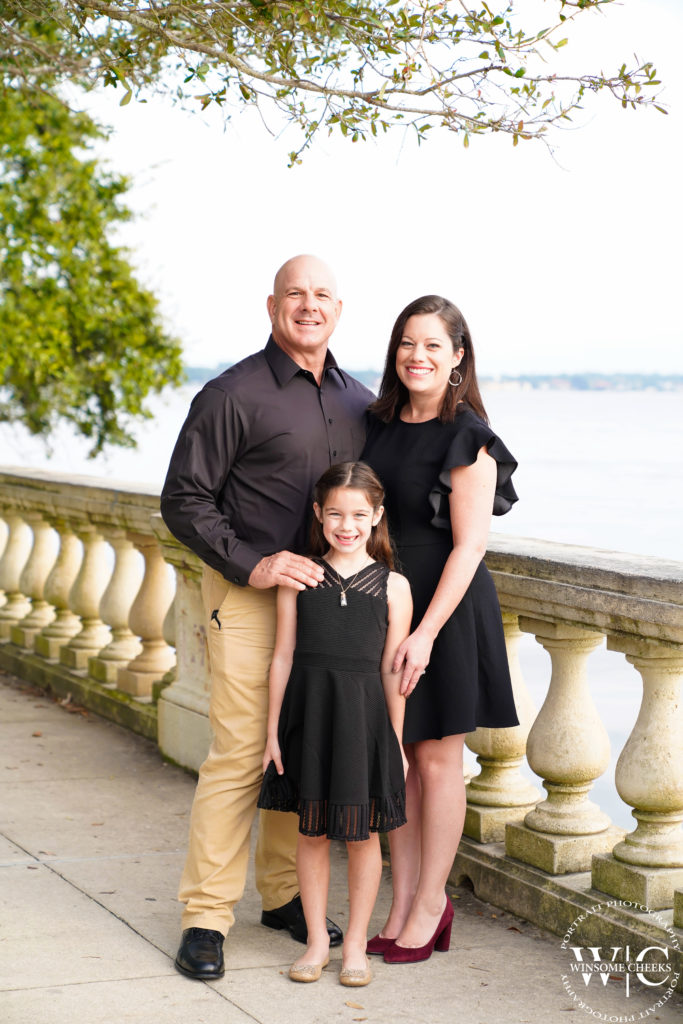Choosing your first professional camera is no joke. Upgrading to your second is even harder. This article aims to assist those facing either scenario by providing you the information you need to make the right decision if you’re currently planning a move away from consumer level cameras and eyeing a professional Sony mirrorless camera.
I spent a good chunk of precious time earlier this year researching my options when upgrading my professional camera gear. Having moved from one of Sony’s most basic mirrorless models (A6000, $550) to it’s latest and second highest end model (A7RIII, $3,200), I know a thing or two about the specifications and differences between the models, as well as other models in between. So let’s dive right into discussing the 8 things you must consider when purchasing your next Sony mirrorless camera.
1. DLSR vs. Mirrorless Cameras

One of the reasons why people refrain from buying professional cameras is the fear that with the purchase comes the need to carry the traditional bulky/heavy DSLR camera to take photos. You know… the ones you typically see professional photographers with at events. That’s simply not the case anymore given the revolution of mirrorless cameras. You can now have all the power of a traditional DSLR in a more convenient package.
DSLR cameras are larger because they need to fit a mirror and a prism inside the device. You also don’t see your image on the back of your camera until you take the photo. A mirrorless camera body is smaller and lighter with simpler construction, allowing you all professional features of the DSLR camera in a compact and more versatility body. The absence of a mirror means less noise and less camera shake from the mirror flapping with the click of your shutter. The live preview function gives you the confidence that “what you see is what you get,” saving you the time of trial and error so that you can get to doing what’s most important: learning how to put your camera’s capabilities to full use.
Both Sony’s A6000 and A7RIII are mirrorless cameras. So you can already tell you have a mirrorless camera advocate in me. But don’t take my word for it. Do the research to find out just now popular these mirrorless cameras have become and decide for yourself.
2. Full-Frame Sensor vs. Crop Sensor

Crop-sensor cameras are more affordable and will satisfy most of your basic photography needs. How will you know if the camera you are considering is a crop sensor camera? You will see language like “APS-C” and “micro 4/3 systems.” What this means is that your camera’s field of view is cropped in, or closer, than the full frame of view. The Sony a6000 is a crop-sensor camera and did well to meet all of my needs during my several initial years in photography. If you haven’t shot with a professional camera before, give this a shot before you upgrade to full-frame. It’s well suited to satisfy you for quite some time.
Full-sensor cameras take you to a completely different price point on your camera and companion lenses. So walk into this type of purchase with that in mind. The larger sensor gives you broader dynamic range, a shallower depth of field, larger pixels for less digital noise, and better low light performance, all which work together to yield a higher quality image. Simply put, with a full-frame camera, your photos have the potential to truly be the BEST they can be. If you don’t mind the added weight and expense of this camera and its companion lenses, you may well be ready to make the jump to full-frame.
The Sony A7 line (whether it’s the A7, A7II, A7III) is going to be the beginning of your full-frame sensor options. Add the “R” into the name to mean high resolution (i.e. Sony A7RIII). The Sony A6000 line (including the A6300 and A6500) are going to be crop-sensor options.
3. Continuous Eye Auto-Focus

One of the primary reasons that led me to upgrade from my very handy A6000 to the A7RIII was the continuous eye autofocus. When the eye auto-focus function is on, by looking through your viewfinder, you will actually see a green box around one your subject’s eye. This means that the camera has locked focus on your subject’s face, with the sharpest point in the photo being the content inside that green box: the eye. For portrait photographers, this is an amazing option to help get the best focus each and every time.
The Sony A6000 crop-sensor model has this function and does a good job in still shooting mode (AF-S). For years, this was all I ever needed.
But once my little one was no longer a baby, I needed a camera that could keep up with his frequent movements to lock in focus in the moment. The full-frame sensor Sony line has the eye auto-focus ability even while in continuous shooting mode (AF-C). This is the mode you want to be in when you shoot moving subjects. I realized that the inability of the Sony A6000 to use such a key portrait feature in the continuous shooting mode made it nearly impossible for me to get the most out of my camera’s smart features.
For those of you wondering if there is a happy middle ground between the A6000 and the A7RIII price ranges, I do have good news for you. The Sony A6500 line is a crop-sensor camera that does carry the continuous eye autofocus, so it’s a great middle ground for those who are not ready for the splurge into the A7RIII ($3,200) but want more than the basic eye auto-focus function of the A6000 ($550). The A6500 will run you $1,200 for the camera body only, but as with all Sony cameras, are available with a kit lens for a bit more.
Note that the image below mentions the A7III, which is an excellent choice at $2,000. I strongly considered this model against the A7RIII but ultimately elected for the later because I could not give up the higher resolution images (that’s what the R stands for).
4. Videography in 4K

I know what you might be thinking…. you’re just in this for the photos, right? You don’t need to have the fancy 4K video capabilities… leave that to the true professionals.
But YOU could be the true professional any day now with a Sony mirrorless camera in your hands. Whether you are a mom wanting to take beautiful family photos on your own, which means life will naturally lead you to wanting to create family videos as well, or if you are a new photographer looking to build their brand, which means you might want to branch out to video for your own marketing purposes or to provide video options to your clients, videography can be for you!
And when it really does become a passion of yours, you are going to want the best quality imagery that you can get for all the time and effort you will need to put into learning how to properly shoot and EDIT video.
The Sony A6000 would not be my first choice for video purposes, so I’m going to actually recommend to you the Sony A6500 if you are serious about shooting video. This middle of the road option is closer to the light weight of the A6000 but with the 4K video capabilities of the A7rIII. The price tag is also closer to the A6000. But if you really want to dive right in for the best, the Sony A7RIII shoots 4K video at 30 frames per second with 15 stops of dynamic range.
5. Touch Screen

One of the setbacks of the Sony A6000 is the fact that you have to manually go through functions to re-adjust focus. This is great if you know your camera well and can navigate swiftly as needed while in the moment. It is also fine if you’re used to working without the touch screen and the idea that better screen technology is out there sits well with you.
But for others, the touch screen capabilities of the Sony A6500 and Sony A7RIII are well worth their weight in gold. This function allows you to change your focus with the tap of your finger so that you don’t miss out on any moment that you are attempting to capture. this function also helps also navigating the menu a breeze. This means less time that your subjects (often children and/or clients) have to impatient wait for you to figure out how to properly focus before you press the shutter button.
6. The Megapixel Difference

The megapixel count on your camera is a feature you have to consider before making your purchase. The megapixel count matters because resolution becomes a huge factor when you blow up your images. Image trying to blow up your phone images to a 20×30 canvas…. you would lose so much quality as the image is stretched and blurred out to fit the larger scale. With a high megapixel count, you don’t have to worry about resolution. You will always have plenty of detail when you enlarge your images for print.
With that being said, all that extra detail is bound to take up more space on your memory card. So know that if you elect for a much higher megapixel count (higher resolution images), you are going to fill up your memory cards much faster. This will effect you regardless of whether you shoot images of your own family or professionally shoot for other families. You will just need to account for the extra hard drive space because of the unloading you will have to do from your memory card…. OR you can buy a more expensive and larger memory card.
The Sony A6000 has 24 megapixels while the Sony A7RIII has a whopping 48 megapixels. Having shot with the A6000 for three years before purchasing the A7RIII, I can tell you that I see every bit of the difference between their resolutions. The higher resolution was the top reason I jumped ship.
7. Dual memory slots are amazing

I don’t know about you, but I’ve had some bad encounters with memory card failures over the years that are frustrating to no end. Before, when I shot with a single memory card slot, I would walk away from photo shoots with heartburn until I reached my computer to backup the images from the shoot. There is a saying that your images don’t exist until they are located in two places. And even then… who knows…
The ability to write simultaneously to two memory cards might not be as important to you if you are just starting in your photography and need that money for other features (i.e. a better lens), but if you’ve acquired an arsenal of good lenses and other people are depending on you for their images, this feature is a godsend.
Who wants to walk away from a two hour photo session just to have to break the bad news to the client that you cannot access what’s on your memory card?
So if you’re upgrading so that you can jump start a photography business you really need to give this feature some strong consideration. Only the Sony A7 line and Sony A9 lines have this function, and these lines will cost you a pretty penny.
If you’re only buying a mirrorless camera so you can take beautiful images of your children, save that money for what you really need (i.e. a specialty lens).
8. Adaptable Lenses

Those prices I mentioned above for my previous and current Sony cameras were ONLY for the camera itself. With higher end professional cameras, whether DSLR or mirrorless, you can expect that your purchase may well need to be a la carte, especially if you want your choice of specialty lenses (i.e. portrait lens, macro lens, etc).
If this is your first time purchasing a professional level camera (meaning you don’t have extra lenses) then you must move forward with your purchase with the understanding that you won’t have a working setup until you pair the camera with a professional lens.
That means accounting for some extra funds to either get a camera kit (where the camera comes with a standard “kit” lens) or dishing out some extra for a more specialized lens.
The best thing about ALL of Sony mirrorless lines is that they can adapt to foreign lenses. This means that unlike Canon or Nikon, which can only take native lenses, Sony cameras can use an adaptor to take just about any other brand’s lenses. This opens up an entirely new world of customization and savings, especially since Canon and Nikon lenses have been out longer and will be much more affordable and available on the used market than the newer Sony mirrorless lenses.
9. Sony Mirrorless Lenses

At first, I thought companies were just out to get us for our money when it came to all the choices out there on the market. But as I started diversifying my portfolio, I began to realize how you really do need a different tool for each job.
Know that if you want the best quality lens Sony has to offer (i.e. it’s G-Master series), you will not get the best results from that lens with a crop-sensor camera. Same thing goes for a crop-sensor lens, which may defeat the purpose of your expensive full-frame camera.
Also know that focal length makes a difference. The perfect example is how if you’re wanting to shoot images of people, you should pick a 50mm focal length on a crop-sensor camera and an 85mm focal length on a full-sensor.
Moreover, if you’re wanting better low-light performance and background blur, choose your lowest aperture that you can find (i.e. the 35mm 1.8, a crop-sensor lens that works well with the Sony A6000, is amazing). You won’t get that quality of images with the kit lens that comes with your Sony A6000.
That being said, your G-Master full-frame 24-70mm 2.8 lens will out-do your crop-sensor lens any day, despite a 2.8 aperture. And the only reason I would leave ever that G-Master work-horse of a lens would be to put on the full-frame 85mm 1.8 because its aperture works better in low light settings and gets me a better background blur.
10. Your Needs and Preferences

At the end of the day, I am going to be the last one to suggest to you that you should get the better, more expensive, camera just because it’s nicer. Throwing your entire budget into your camera and lens setup means you now have little to none to spend on your accessories (i.e. professional lighting, flash modifiers, protective carrying cases, a gimbal for video recording, a microphone, etc), you know… the accessories you will want once you start mastering the use of your camera. This is not even to mention the money you might later want to spend on photo and video editing software (i.e. Lightroom and Photoshop) as well as premium editing tools and educational training (i.e. Summerana).
So give the comparison some thought and pick the Sony mirrorless camera that is right for you. Pick the camera that best fits your level of expertise and/or realistically fits the level of expertise you can reasonably attain within the next several years, because before you know it, next year’s model is going to come out and we will all be drooling after the next best thing.